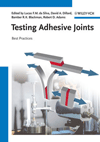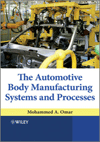In a way, weldbonding can be considered a “belt-and-suspenders” approach to structural joining. Weldbonding combines adhesive bonding and welding into one process step. For example, the automotive industry combines resistance spot welding with adhesive bonding for hem joints. In fact, weldbonded structures can be found somewhere on every vehicle today.
Weldbonding is not limited to resistance spot welding. EWI has also practiced weldbonding using laser welding, ultrasonic metal welding, friction stir welding and even arc welding. Yes, precision plasma arc spot welds near adhesive are possible.
Looking at the joining processes individually, the advantages of welding compared with adhesive bonding are faster joining time and higher peel performance. The advantages of adhesive bonding over welding are higher shear strength and more efficient use of joint area for load bearing. Combining adhesive bonding and a welding process produces the best of both approaches: improved peel performance, higher shear strength, greatly improved fatigue performance and rapid joining along joint overlaps.
Other advantages of weldbonding might be considered secondary, but are still important overall. The mechanical demands on the adhesive are reduced because it no longer has to handle the load on the joint alone. Therefore, an adhesive with somewhat lower performance and lower cost can be used. Alternatively, an adhesive with higher toughness can be substituted for one having higher absolute strength.
On the welding side, the number of welds can be reduced and their placement can be more strategic. Individual weld area might be reduced because the welds no longer bear the entire load. Fewer, smaller welds reduce capital and maintenance requirements for equipment and, possibly, utility costs.
There are structural and performance advantages as well. One is the reduction of noise and vibration. Another is increased structure stiffness. Higher joint efficiency allows engineers to use thinner metals, reducing weight. Why is that? Welds react to loads as a point or line source. Spans between welds transfer load from one weld area to the next, but that span does not participate mechanically in the joint and the metal must be thicker to allow the weld area to handle higher point loads. With the inclusion of a continuous adhesive bond, the entire span participates in the joint and point loading is reduced, enabling the design to be lighter. Having fewer welds to dress or hide also improves finish and appearance at lower cost.
What considerations lead to selecting a weldbonding process? Relative metal thickness and joint access are important along with the weldability of the metal or metals. Resistance welding and ultrasonic metal welding often require access from both sides and require high contact pressure. If this access is not possible, then a noncontact method such as laser welding or arc welding may be better. Those last two methods can be used without burning the adhesive through strategic placement of the adhesive and welds.
Laser weldbonding, delivered by fiber optics and mirrors, allows partial-penetration welds to be made from one side only. A partial-penetration weld from the back side into the front can be made blemish free on the show surface. At EWI, we once welded a demonstration aluminum fuselage article for NASA, placing over 800 partial penetration keyhole laser welds from the back side of a 0.125-inch aluminum rib into a 0.03-inch skin. The few punch-throughs were hidden easily by ordinary paint work. The estimated cost-saving for laser weldbonding over a traditional riveted structure was 30 percent, because it was not necessary to drill, match and seal rivet holes. The incremental weight gain from the added adhesive was overwhelmed by eliminating the weight of the rivets.
What metals can be weldbonded? Generally, any metal that can be welded and bonded can be weldbonded. This includes most steels and many aluminum alloys. Nickel-based and copper alloys are difficult. Processes that discourage solidification cracking are preferred for aluminum. Ultrasonic welding is one of those.
Although it is widely practiced in the automotive sector, designing for weldbonded structure is new to many industries. Familiarity with design methods for both bonding and welding processes is a big plus when designing a joint for weldbonding. The automotive community has been practicing these methods for decades. When incorporating rapid production rates, the belt-and-suspenders approach can be a good way to go.
Get our new eMagazine delivered to your inbox every month.
Stay in the know on the latest assembly trends.
SUBSCRIBE TODAY!Copyright ©2024. All Rights Reserved BNP Media.
Design, CMS, Hosting & Web Development :: ePublishing


